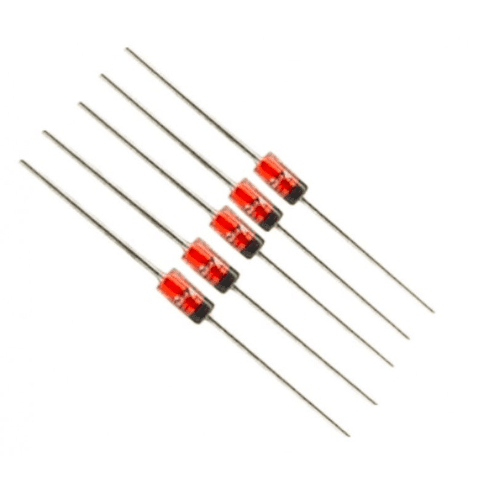

Zener diode - 3.3 Volt
Product Details
Key Features:-
Voltage Regulation: The primary function of a 3.3V Zener diode is to maintain a stable output voltage of about 3.3V across its terminals when operated in the reverse breakdown region. This voltage is known as the Zener voltage or Vz.
Reverse Breakdown: Unlike standard diodes that block reverse current, Zener diodes are designed to operate in the reverse breakdown region. When the reverse voltage applied across the diode reaches or exceeds its Zener voltage (3.3V in this case), it starts conducting in the reverse direction.
Stable Voltage Reference: Zener diodes serve as stable voltage references in circuits, providing a known, constant voltage for other components. They are commonly used for voltage regulation and precision voltage references.
Functionality:
The main function of a 3.3V Zener diode is to provide a stable and fixed output voltage of approximately 3.3V when the reverse voltage across it is greater than or equal to its Zener voltage (Vz). This makes it a useful component for voltage regulation, ensuring that the output voltage remains constant, even when the input voltage or load conditions vary.
Applications:
Voltage Regulation: They are frequently used as voltage regulators to stabilize and control the output voltage in power supplies, ensuring it remains at 3.3V regardless of input voltage fluctuations or load changes.
Voltage Reference: Zener diodes serve as stable voltage references in analog circuits, providing a precise voltage for calibration and measurement purposes.
Overvoltage Protection: Zener diodes can be employed to protect sensitive components from voltage spikes and overvoltage conditions.
Signal Clipping: In signal processing circuits, Zener diodes can be used to clip or limit the amplitude of signals.
Voltage Measurement: They are used in voltage measurement circuits and analog-to-digital converters (ADCs) as known voltage references.


